What are sounds and how are they made? Let's find out!
Watch and learn
Let's learn about sounds!
Title: Making sound
When two things bang into each other, they can make a sound. The sound is actually caused by things shaking. This shaking is very tiny and very quick so we can’t usually see it. We call this shaking a vibration.
Sound is vibration. Sound travels through the air and into our ears. We can see in slow motion how the strings on this ukulele wobble when they are plucked.
That wobbling movement is the vibration that makes the sound we hear. There are lots of ways to describe sounds.
The electric whisk is loud, but the spoon stirring is quiet. The microwave makes a hard ping when the food is ready. The washing machine makes a soft sound as the water swooshes the clothes clean. The cat’s meow is a high sound. The dog’s woof, though, is a low sound.
This hard drum sounds different to this soft cushion. Different things make different sounds because of their size and shape and what they are made of. This stick of celery doesn’t make the same sound as a hard wooden drumstick.
There are many different ways to create a sound. You can hit a triangle. You can pluck a guitar string. You can shake a tambourine. And you can rub a bow over a violin string.
Our ears are very sensitive. We can protect them from loud sounds by using ear defenders. We hear lost of sounds every day. Some we can control, others we can’t.
What sounds good to you? How do you feel when you hear sounds you like?
What are sounds?
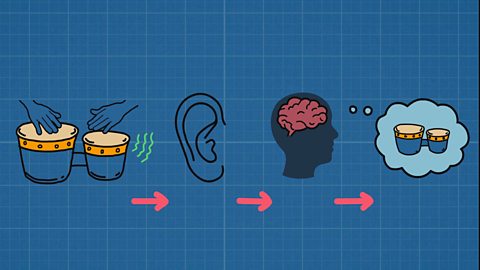
Do you know what sound is?
All sounds share one thing in common. They are caused when something vibrates.
This means it shakes or wobbles very quickly.
Tiny shaking movements back and forth are called Sorry, something went wrongCheck your connection, refresh the page and try again.. The vibrations travel from the object through the air to our ears where our brains work out what the sound is and what it means.
Vibrations can be produced in lots of different ways.

Try this
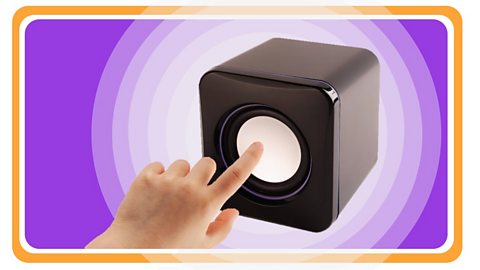
Play music through a speaker.
Gently touch the surface of the speaker.
Can you feel the vibrations?

How can you make sounds?
Can you think of different ways you can make a sound?
Lots of different things make different sounds.
You can make sounds with your voice, with different objects, or even with musical instruments.
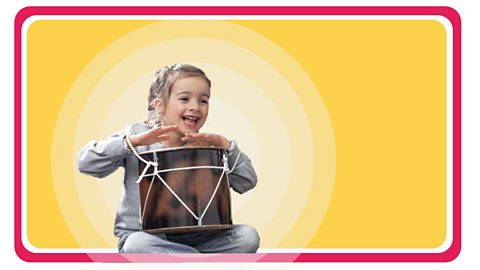
Image caption, Hitting a drum causes the skin of the drum to vibrate and produce a sound.

Image caption, Plucking the string of a guitar or ukulele causes the string to vibrate and make a sound.

Image caption, Rubbing a bow across violin strings causes the stings to vibrate and make a sound.
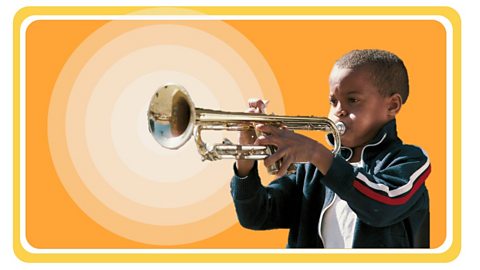
Image caption, Blowing air through a trumpet creates vibrations and makes a sound.
1 of 4
Why do different objects make different sounds?
Different objects make different sounds depending on the materials they are made of, how the vibrations are produced, and how big they are.
All these things can change the volume of sounds.
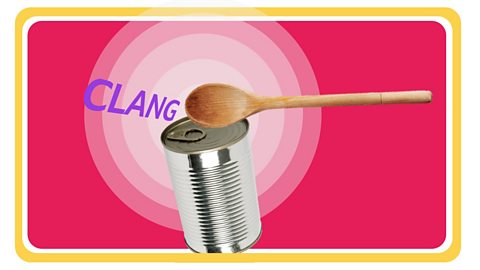
Hitting a tin can with a spoon makes a loud sound because the hard metal vibrates well.


Hitting a pillow makes a quiet sound because the pillow is made of soft materials that don't vibrate very well.

The volume of a sound means how loud or quiet it is.
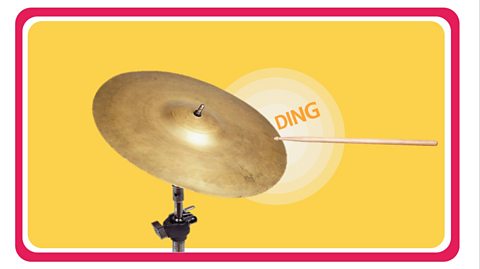
Hitting a cymbal softly makes a quiet sound.

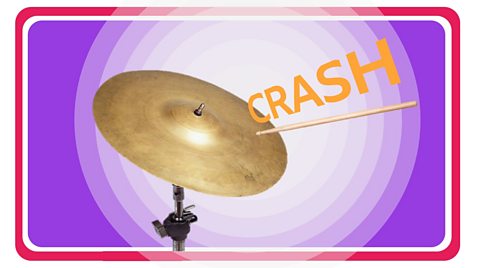
Hitting a cymbal hard makes a very loud sound.

The size of object making a sound can change how loud it is.
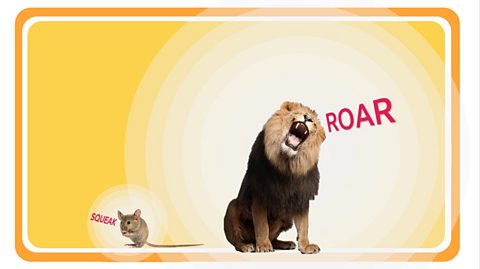
A small mouse makes a quiet squeak.
A big lion makes a loud roar.
Sounds and our ears

Very loud sounds can damage our ears. 👂
Sometimes we have to protect our ears from loud sounds, for example workers on a building site or at a noisy airport wear ear defenders.🎧

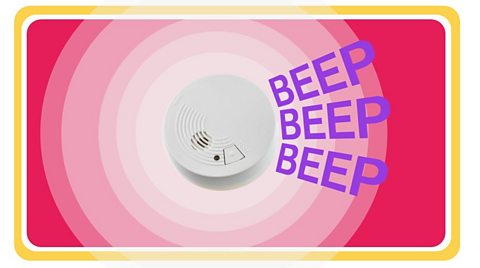
We all hear sounds slightly differently; some sounds we like and other sounds we don't like.
Music is composed to sound nice but a smoke alarm is designed to sound uncomfortable so we have to take some action.
What sounds do you like? 👍
What sounds do you not like? 👎

Keywords

Sorry, something went wrongCheck your connection, refresh the page and try again. – What an object is made of, for example wood, metal, plastic, glass or cloth.
Sorry, something went wrongCheck your connection, refresh the page and try again. – Tiny movements back and forth in a material.
Sorry, something went wrongCheck your connection, refresh the page and try again. – How loud or quiet a sound is.
Activity
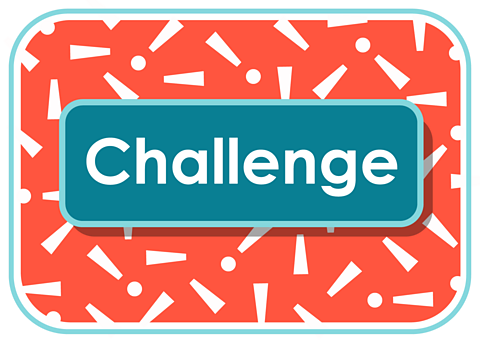
Science lab:
Make your own musical sounds!
You will need:
kitchen pots and pans
a tea towel
different objects to hit them with (e.g. a wooden spoon, a pencil, a straw)
Watch this video to find out what to do!
Quiz
Do you want to find out how much you've learned about making sounds? Try our fun quiz!
More on Forces, electricity and waves
Find out more by working through a topic
- count2 of 3
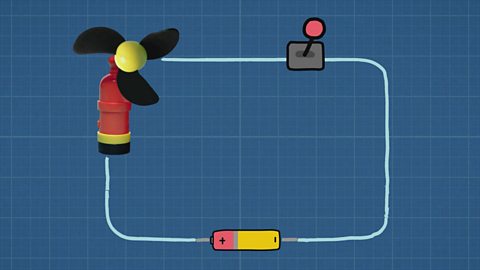
- count3 of 3
